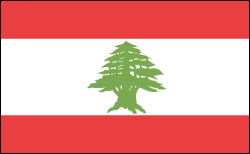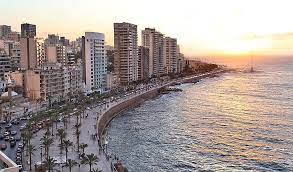The world is a busy place, with politics changing and events happening all the time. However, we make it simple to quickly read all the pertinent data for every country, in addition to flag details and an atlas summary for what kind of general information you are most interested in.
The following basic facts and information are covered in detail in each Country’s Profile:
Maps, geography, Brief history, the current ruler, area, population, capital, and largest cities – Languages-Race and ethnicity – Faith – Rate of literacy and The economy.
Facts & Information about Lebanon
LetsExplore has everything you need to know about Lebanon. Check out our country profile, full of essential information about Lebanon’s geography, history, government, economy, population, culture, religion, and languages.
Flag Of Lebanon

Map Of Lebanon

President: Acting President Tammam Salam (2014)
Prime Minister: Tammam Salam (2014)
Area total: 4,015 sq mi (10,400 sq km); land area: 3,950 sq mi (10,230 sq km).
Population: The estimated population in 2014 was 5,882,562 (growth rate: 9.37%); birth rate was 14.8/1000; infant mortality was 7.98/1000; and life expectancy was 77.22 years.
Capital City: At 2.022 million, Beirut is the capital and largest city as of 2011.
Currency: Lebanese pounds are the unit of currency.
Official Name: Al-Joumhouriya al-Lubnaniya
Languages: official Arabic, French, English, and Armenian
95% of Lebanese people identify as Arab, 4% as Armenian, and the remaining 1% as other races. It should be noted, however, that many Christian Lebanese prefer to be referred to as Phoenicians and do not identify as Arabs.
Religions: Islam (54%), Druze (5.6%), Christian (40.5%) (consisting of 21% Maronite Catholic, 8% Greek Orthodox, 5% Greek Catholic, and 6.5% other Christian), Baha’i (less than 5%), Baha’i, Buddhist, Hindu, and Mormon. Note: 18 religious sects observed Independence Day, November 22, as a national holiday in 2012 (approx.
(Est.) 89.6% of people are literate.
Economic Summary:
the GDP/PPP was estimated at $64.31 billion in 2013, with $15,800 per person. Rate of actual growth: 1.5%. 5% inflation is expected. (Est.) 9.2% of workers are unemployed. 10.72% is arable land. Citrus, grapes, tomatoes, apples, vegetables, potatoes, olives, tobacco, sheep, and goats are examples of agriculture.
The labor force is 1.481 million, with the addition of up to 1 million migrant workers (estimated in 2007). Banking, travel, food processing, jewelry making, cement, textiles, mineral and chemical goods, furniture and wood products, oil refining, and metal fabrication are some of the industries involved.
Natural resources include arable land, iron ore, salt, limestone, and a state of surplus water in a location experiencing a shortage. Exports: $5.826 billion (estimated): paper, fruit, tobacco, inorganic chemicals, building minerals, real jewels, electric power machinery and switchgear, and various consumer items.
The value of imports in 2013 was $20.97 billion, including petroleum products, automobiles, pharmaceuticals, apparel, live animals, consumer goods, paper, textile fibers, and tobacco. Key trading partners include the United States, Egypt, China, Greece, South Africa, Syria, the United Arab Emirates, Turkey, Switzerland, Saudi Arabia, Italy, and France (2012).
Communications: 877,800 primary phone lines were in use in 2012; there were 4 mobile cellular lines (2012). Media outlets: 7 television stations, 1 of which is controlled by the state; over 30 radio stations, 1 of which is owned by the state; satellite and cable TV services accessible; partner stations provide access to at least 2 international broadcasters’ transmissions (2007). 64,926 Internet service providers (ISPs) as of 2012. Users of the Internet: 1 million (2009).
Transportation: 401 km of total railways (unusable due to civil war destruction) (2008). Highway length: 6,970 km (2005), including 170 km of expressways. Ports and terminals: Tripoli, Beirut. Airport numbers for 2013 are 8.
International disputes: Lebanon has claimed the Shab’a Farms area in the Israeli-occupied Golan Heights since 2000; the approximately 2,000-strong UN Interim Force in Lebanon has been in place since 1978; the border between Lebanon and Syria is not well defined, with several sections under dispute.
Geography:
Lebanon is located north of Israel and west of Syria at the easternmost point of the Mediterranean Sea. It is almost five times smaller than Connecticut. The Anti-Lebanon range borders the east, but the majority of the country is covered by the Lebanon Mountains, which run parallel to the western coast. The Bekaa Valley, the main agricultural region, is located between the two.
History:
Lebanon and its neighbor Syria, which had previously been a single political entity under the Ottoman Empire, were assigned to France a League of Nations mandate following World War I. In 1920, France split them up into independent colonial administrations, creating a border that kept largely Muslim Syria apart from the diverse religious populations of Lebanon, where Maronite Christians dominated at the time. Lebanon’s declaration of independence on November 26, 1941, after 20 years of French mandate rule; nonetheless, complete independence was achieved gradually. On January 1, 1944, delegates of Lebanon and the French National Committee of Liberation came to an agreement that gave the Lebanese government most of the authority that France had previously held. In 1946, the French forces’ withdrawal was finalized.
A Maronite Christian president, a Sunni Muslim prime minister, and a Shiite speaker of the national assembly represented various religious sects in the administration, as stipulated by the unwritten National Pact. For 20 years, this setup was functional.
In 1958, a civil war broke out when Muslim factions led by Kamal Jumblat and Saeb Salam rebelled against the Lebanese government, which was commanded by President Camille Chamoun, a Maronite Christian who preferred tight connections to the West. President Eisenhower dispatched US forces to reinstall government authority on July 15, at Chamoun’s request.
you can also check Country Of The World-Tajikistan here!

Leave a Reply